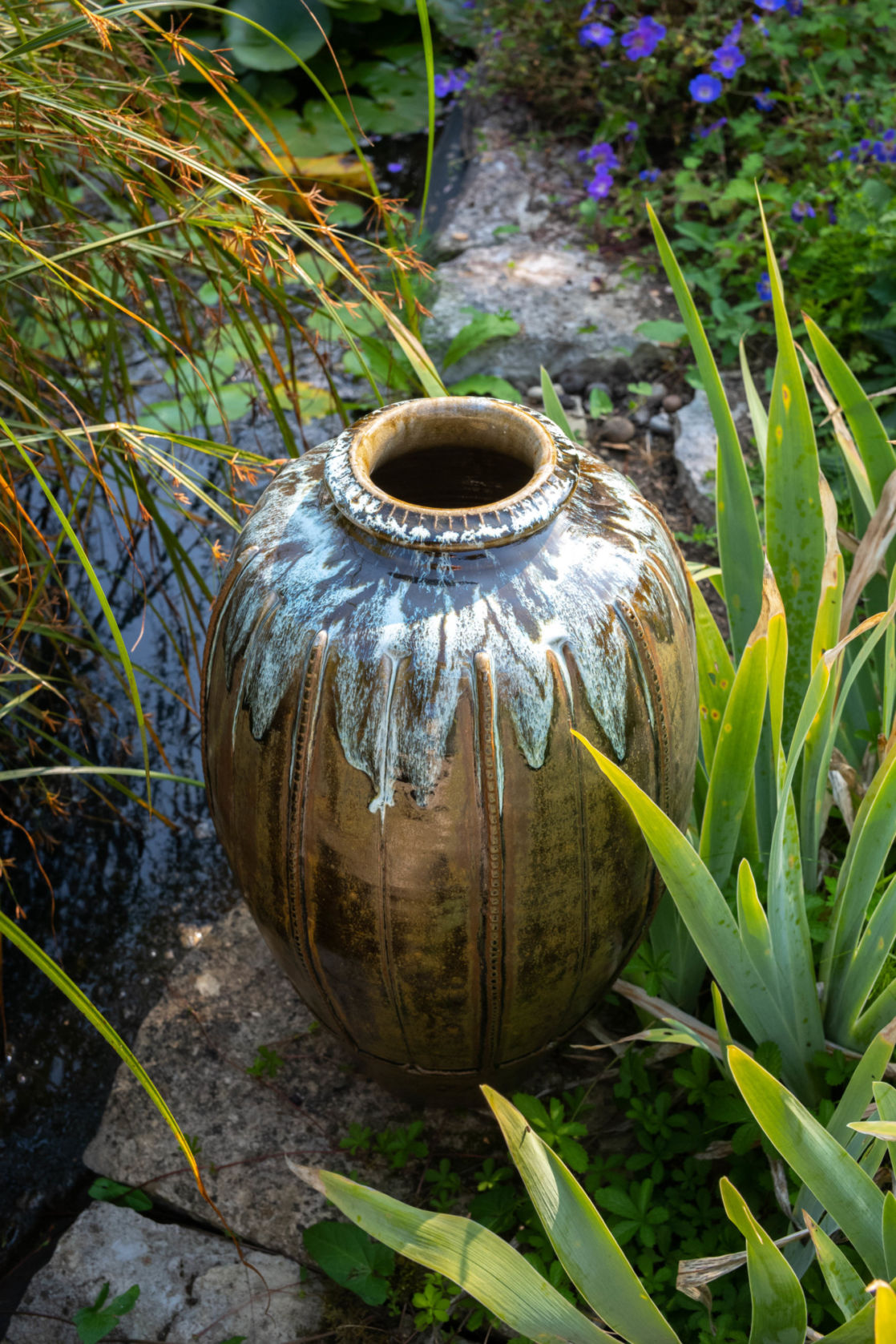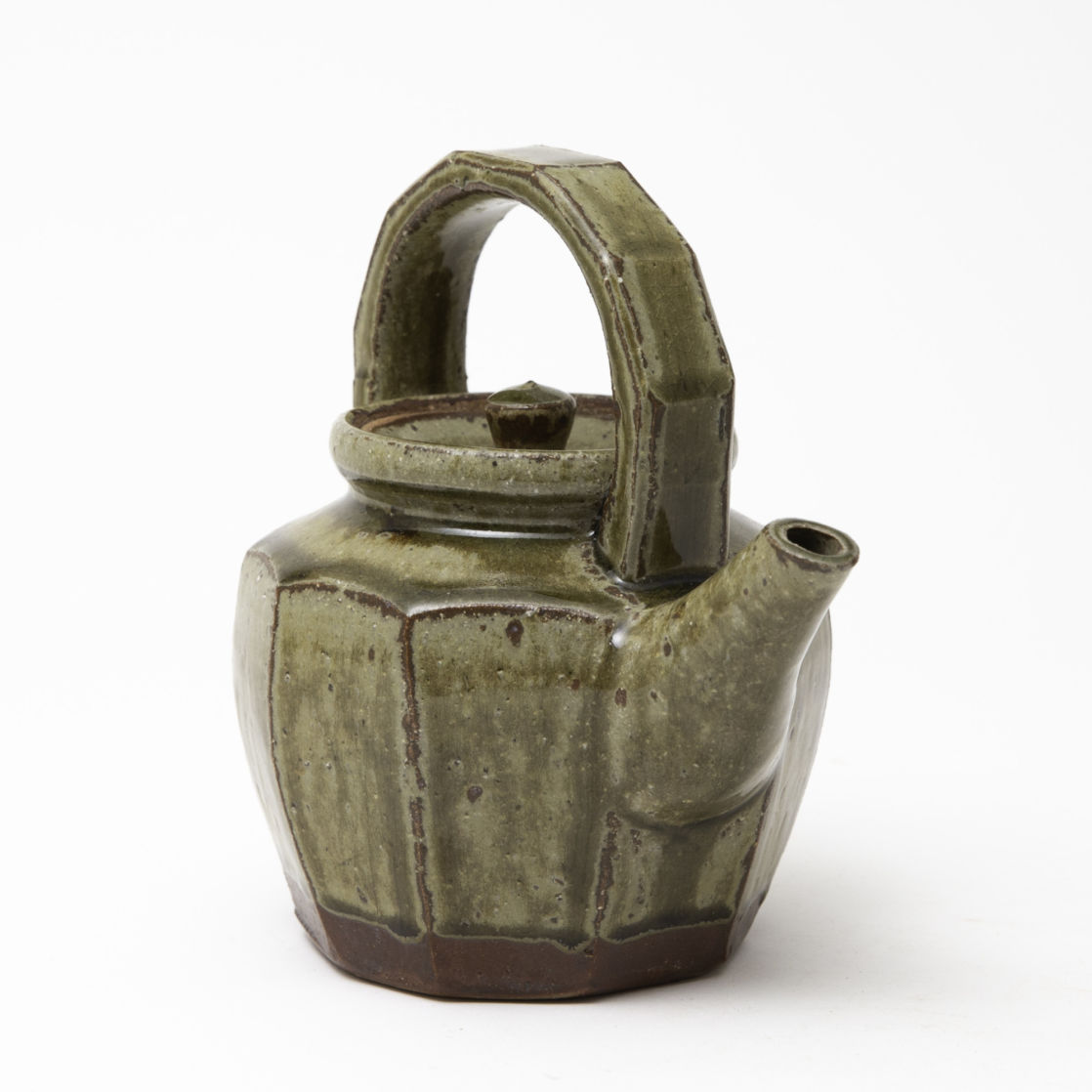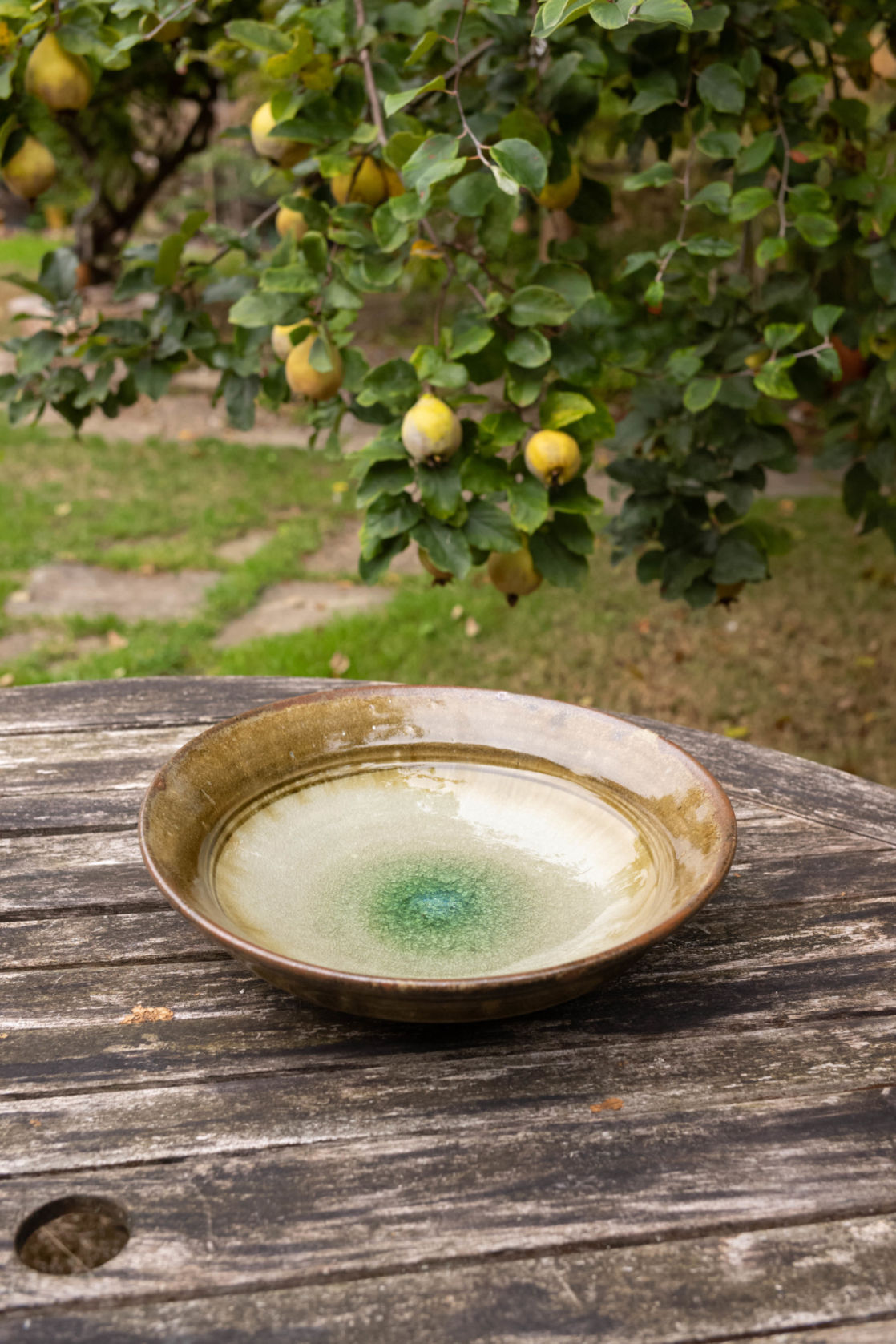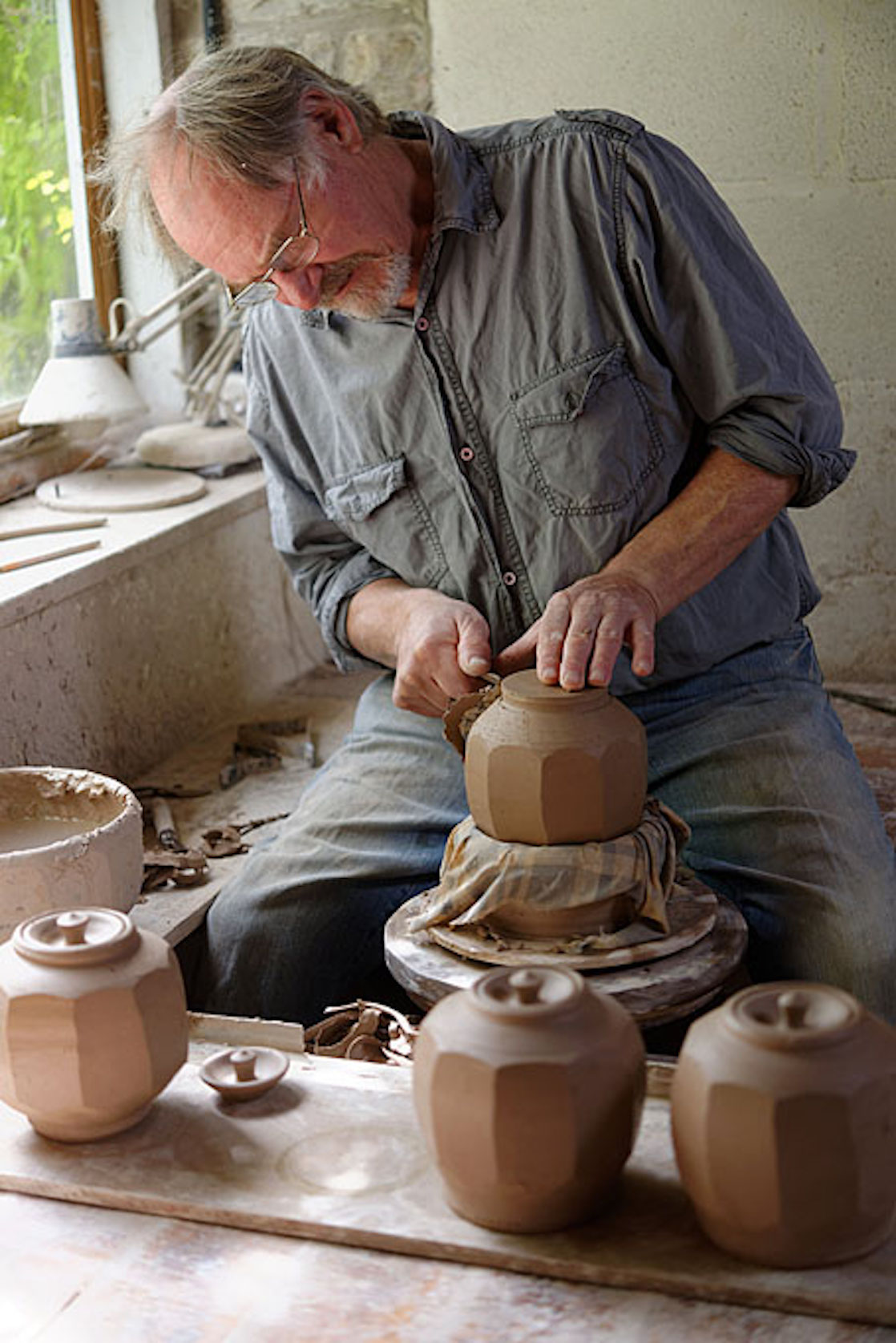Welcome to Ceramic Review
Ceramic Review is the magazine for contemporary and historical ceramics, ceramic art and pottery.
Ceramic Review Issue 334
July/August 2025
Ceramic Review is the magazine for contemporary and historical ceramics, ceramic art and pottery.
July/August 2025
Mike Dodd’s practice represents not only his years as a dedicated maker, but the materials and environment that have harmonised to produce his distinctive pots. Alex McErlain explains more

Large bottle by Mike Dodd | Photograph by Jay Goldmark
One of Britain’s long established and influential potters, Mike Dodd has been making pots for over 50 years and yet retains a youthful enthusiasm for his chosen craft. Over the years he has established at least six workshops in locations around Britain, where along the way he has developed a passion for exploring materials found in the locality. He is currently based in a beautiful rural workshop located near Glastonbury in Somerset. We have known each other a long time and recently spoke on the telephone to discuss his current concerns and with typical modesty he reflected on things he has learnt. ‘I don’t know how well I understand the language of pottery,’ he explains. ‘You know what it’s like, you make a bunch of pots – similar ones – and you fire them and the kiln gives you a few that are particularly strong and better than one could have expected. I am excited by this and naturally want to share it with others.’ His principal concern has always been with form, stating: ‘I’m always interested in form because it is the language of [many arts] music, dance, sculpture and pottery. Cardew said pottery is about the majesty of form, but I’m not sure if that’s the right word to use. Vitality gives dignity to form.’
EARLY INFLUENCES
Dodd’s early encounters with pottery – under the aptly named Donald Potter at Bryanston School – were influenced by his teachers habit of leaving examples of pots around for the students to study. Work by Bernard Leach, Michael Cardew and Katharine Pleydell-Bouverie impressed him. The form caught his attention even at that early stage: ‘I was influenced by the spirit of the work, it is always the spirit I’m interested in – whether it is lively enough.’ For the past three years he has been gathering a group of his best pots for a forthcoming exhibition at Goldmark Gallery and from the few glimpses he showed me he has certainly amassed some very lively, spirited pots. His workshop set-up is typical of that generation of potters who came to prominence in the 1960s. In a rural setting he occupies a series of outbuildings that include a making studio, kiln room and materials storage. He fires his pots in a large single chamber oil-fired kiln, the type that was once common.
The advantages of dedicated space in which to make and a large kiln to fill enables a potter to develop a regular making cycle, incorporating familiar work with the more experimental. Dodd throws on a momentum wheel, kicked directly on the flywheel, a way of working that encourages gentle movements and focussed attention on each piece as opposed to fast repetition throwing. Pots accumulate steadily over the course of several weeks, which in turn enables him to contemplate the developing forms in a variety of types. There is always a strong element of function in his work, as his core value is that his pots are made to be used, whether for storing, eating and drinking or just enriching our lives with their visual presence.
His work is always strongly stated in form; decisive, inventive and somewhat risky in the bold manner of his decorative mark making. There appears to be no room for hesitation as he approaches the form with knife, stamp, paddle, roulette or comb. The resulting pots are full of vigour and bring delightfully tactile response when handled. He speaks of the pleasure in seeing others responding to his pots in the way they speak to him and being driven to make more because of this.

Teapot by Mike Dodd | Photograph by Jay Goldmark

Dish by Mike Dodd | Photograph by Jay Goldmark
CHARACTERISTIC STYLE
The use of slips, particularly with a thick application, is one of the characteristics of Dodd’s work. He has developed ways of treating form that we associate completely with him and his style of working, such as the addition of dry white clay to a partially thrown shape, which is then pushed out from the interior leaving a cracked and textured surface for the glaze to interact with. His renowned interest in exploring local materials is still strong. He spoke to me of being presented with a sack of broken red clay roof tiles by a friend. The friend said: ‘I think these may make a good glaze’, and of course Dodd couldn’t resist trying. The broken roof tiles were first soft biscuit-fired (650˚C) to burn off any organic matter from being stored outside and then run through a turnip crusher and blended with ash, which subsequently produced a very interesting glaze. This exploratory drive has left him with many buckets of glaze of which he probably uses about a dozen regularly. Dodd is also known for his passion for respecting nature and the environment. As a committed vegetarian, his garden and surroundings are integral to how he chooses to live, growing fruit and vegetables to eat and perhaps indirectly absorbing the influences of nature, which permeates all his work.
It is this integration of man, materials and environment that harmonise to produce the circumstances from which good work may emerge. This is quite different from taking inspiration for ideas from a specific source, which many artists make reference to. It also questions the validity of the labels that are frequently attached to potters of his generation. Describing the work as ‘Anglo Oriental’ or ‘Leach tradition’ seems to miss the point of how potters like Dodd have developed their personal language of expression. The more you understand the motivations behind his work, the more enrichment you are able to derive from his pots.
CONSIDERED APPROACH
Goldmark Gallery has had a big impact on those potters it represents. There is of course a monetary impact from being able to sell work at a premium price, which has been long overdue for the best contemporary practitioners. But there has been another perhaps more profound impact from the way in which the artists are encouraged to gather the exhibition pieces over an extended period of time, usually about three years. In the past, when it was common for potters such as Dodd to have three solo shows a year, the work would usually be drawn from the most recent firing. Having time to prepare, to allow a body of work to be considered in its assembly, time to edit as it progresses, brings a very different feel to an exhibition, one that benefits both maker and audience and in my opinion the finest work should command a premium price as a just reward.
It has been a very strange year for potters confined to their homes during countrywide lockdowns. Being able to make continually has been of great benefit to some, although difficulties in maintaining an income without the usual fairs and gallery exhibitions has brought real hardship to many. Creatively however, many potters have taken the opportunity to explore new things. Commenting on this situation Dodd explains: ‘because selling slowed down this past year and my shelves were all getting full, I decided to make some large 50 or 60lb (22-27kg) pots. I just wanted to challenge myself.’
These ‘lockdown pots’ – large jars with impressed and combed decoration – are truly magnificent and demonstrate not only that Dodd still has the capability to throw at that scale, but that his creative experiences gained over many decades can be brought together in a truly vibrant manner. What a lockdown legacy.
For more details visit mikedodd.co.uk; solo show at Goldmark Gallery, May 2021; goldmarkart.com

Mike Dodd making Teapots in his Pottery in Somerset 2014 | Photo by Ben Boswell